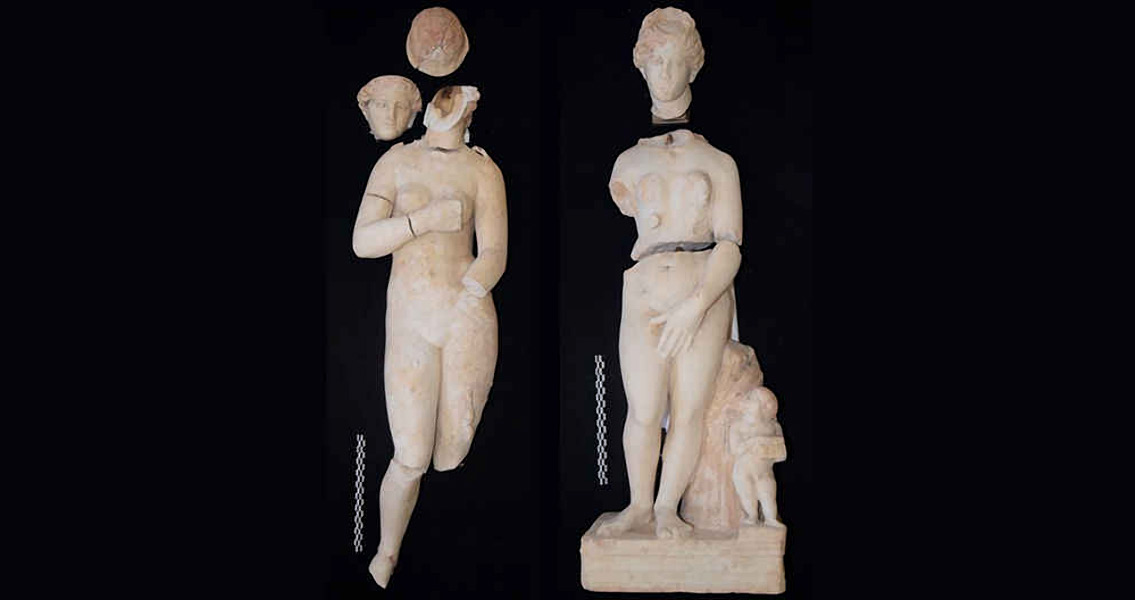<![CDATA[Researchers working in Jordan, at the ancient city of Petra, have unearthed two statues of the mythical goddess of love: Aphrodite. The marble statues were discovered during the excavation of domestic structures in the North Ridge section of the city this past summer. Tom Parker with North Carolina State University, a co-director of the dig, said in a statement released by the university: “I’ve been doing field work in the Middle East for 45 years and never had a find of this significance, these are worthy of display at the Louvre Museum or the Metropolitan Museum of Art.” The team was excavating what they believed was just an ordinary home when they came across the statues of the Graeco-Roman goddess. The team found the fragments of the statues adjacent to the staircase of the house, which turned out to be more of an urban villa. Both statues, which also feature the god Cupid, are mostly intact from their pedestal to their shoulders, although both heads and parts of their upper extremities have broken off. All the pieces have been recovered at the site, however, so the statues can be restored. This year's dig, the third of the Petra North Ridge Project, is aimed at discovering clues about the non-elite population which occupied the city. This objective makes the discovery of the statues, while remarkable, also unexpected. “Even though they weren’t exactly what we were looking for, these finds still tell us a lot about the population,” Parker is quoted as saying in the statement. The Nabateans, originally a nomadic people, arrived in what is modern-day Jordan sometime around the sixth century BCE. They abandoned their nomadic lifestyle over time and established Petra, which served as a lucrative trade route connecting India and China to Greece and Rome. The Nabatean kingdom, which reached its zenith in the first century BCE, eventually declined when trade routes shifted. Sometime during the fourth century CE, the Nabateans abandoned their assumed capital at Petra, then known as Raqmu, and migrated north. Made in the Roman style, the marble statues provide an insight as to the cultural impact of the annexation of the Nabatean Kingdom by the Romans in 106 CE. The research team has also uncovered a wealth of artifacts which shed light on the daily routines of Nabatean life: areas built specifically for storage and cooking, remnants of pottery, ceramic oil lamps, animal bones, and even human bones mixed in with personal jewelry and adornments. “The Nabateans were true geniuses in many ways, in part because they were ready and willing to assimilate to and adopt elements of other cultures around them,” Parker explains in the university’s statement, “They adopted a lot of Egyptian culture when they were neighbors. When Romans took over, they were open to Roman influence.” The Petra North Ridge Project is funded primarily by the National Endowment for the Humanities with the National Geographic Committee for Research and Exploration providing additional support. Image courtesy of Tom Parker ]]>
Remarkable Statues of Goddess Aphrodite Found at Petra
